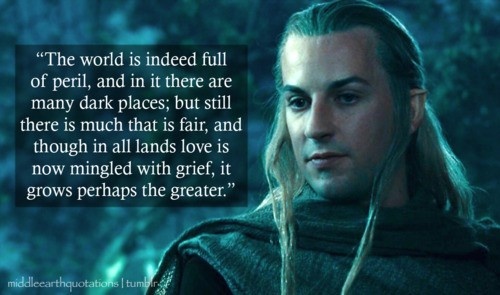


Inherently good characters such as Frodo, Sam, and Aragorn demonstrate selflessness as they serve those around them, alongside humility through their repeated self-doubts as to their own strengths and responsibilities. Lastly, character behaviors often indicate an individual’s alliance with the light or dark. Elvish names such as “ Galadriel” and “Lothlórien” roll elegantly and softly off the tongue, compared to harsh and discordant names that signal evil characters, such as “ orcs” and the “ Nazgûl.” Names are reflective of a culture’s broader language, and Tolkien’s multiple invented languages of Middle-earth generally stereotype its different races: for example the guttural sounds of Khuzdul, the dwarvish language, reflect their rough, straightforward, and often forceful personalities, while the grating and harsh sounds of Black Speech establishes the evil dispositions of Sauron and his servants. Furthermore, Tolkien’s invented names sound good or evil to the ear, heightening the sense of conflict between the two. Clearly the peaceful and aesthetically beautiful elvish locations are shelters for the protagonists, compared to the shadowy, polluted, and obviously evil strongholds of Sauron and Saruman. For example, Rivendell and Lothlórien are described as elegant refuges of culture and knowledge, and the very lightness and brightness of their described locations is contrasted against the darkly foreboding settings of the corrupted Moria, Isengard, and Mordor. Many of Tolkien’s authorial choices establish that the dichotomous struggle between good and evil is the driving force of the novel, as he clearly links people and places to either good or evil. Through the Fellowship’s experiences during their perilous quest, Tolkien proposes that evil occurs when individuals fall to the temptation of wielding power for personal gain. This classic conflict between forces of good and evil is the driving theme in the world of Middle-earth, and in Tolkien’s epic novel.

It is therefore no surprise that the honorable members of the titular Fellowship ( Frodo, Gandalf, Aragorn, Legolas, Gimli, Boromir, Sam, Merry, and Pippin) suffer from the Dark Lord Sauron’s unrelenting evil assaults in their quest to protect the Free Peoples of Middle-earth by destroying the One Ring (Sauron’s creation and the key to his total domination of Middle-earth). The confrontation between forces of good and evil, or light and dark, is the basic theme of epic, myth, and romance-all genres that readers have applied to Tolkien’s The Fellowship of the Ring, the first volume in his Lord of the Rings series.


 0 kommentar(er)
0 kommentar(er)
